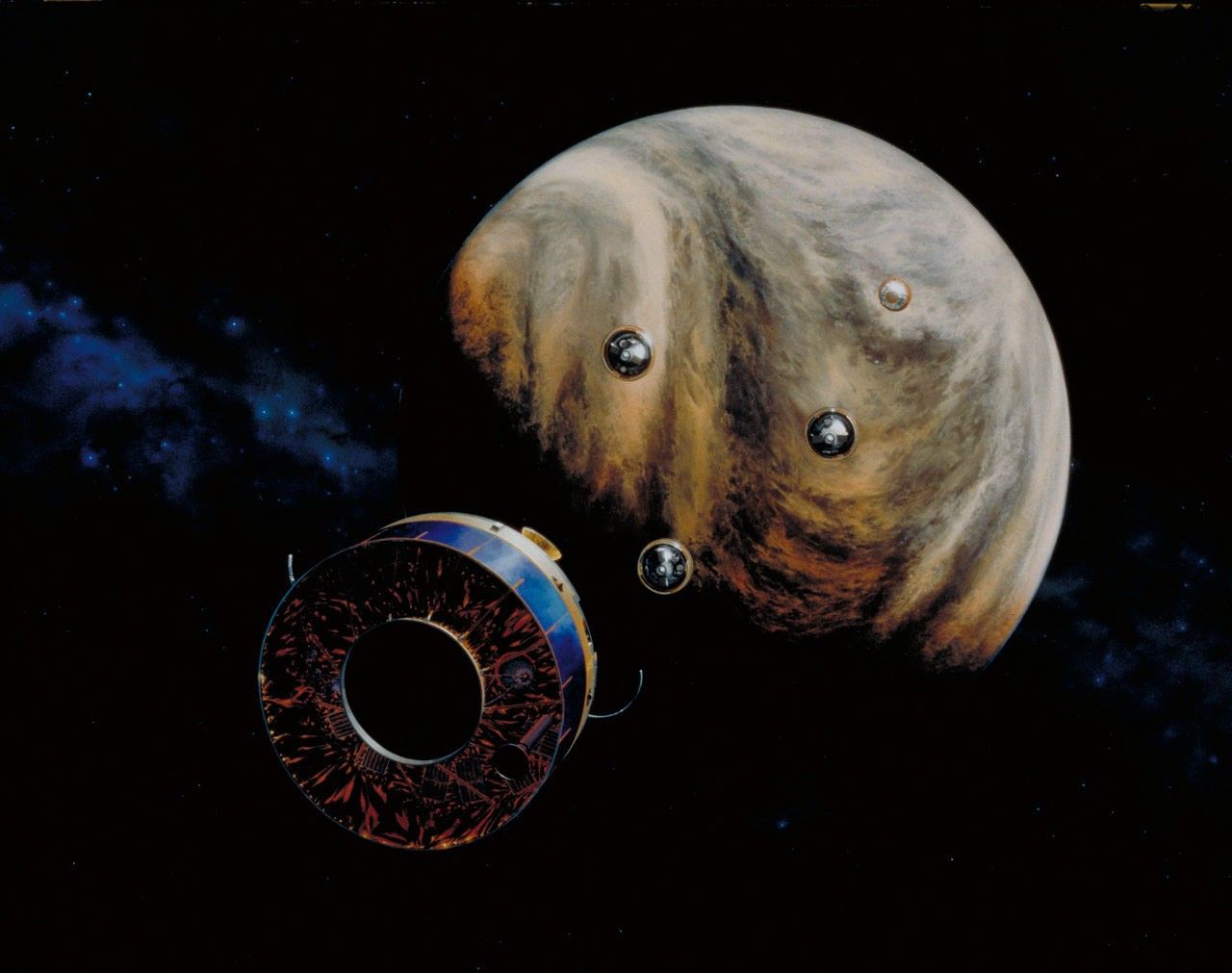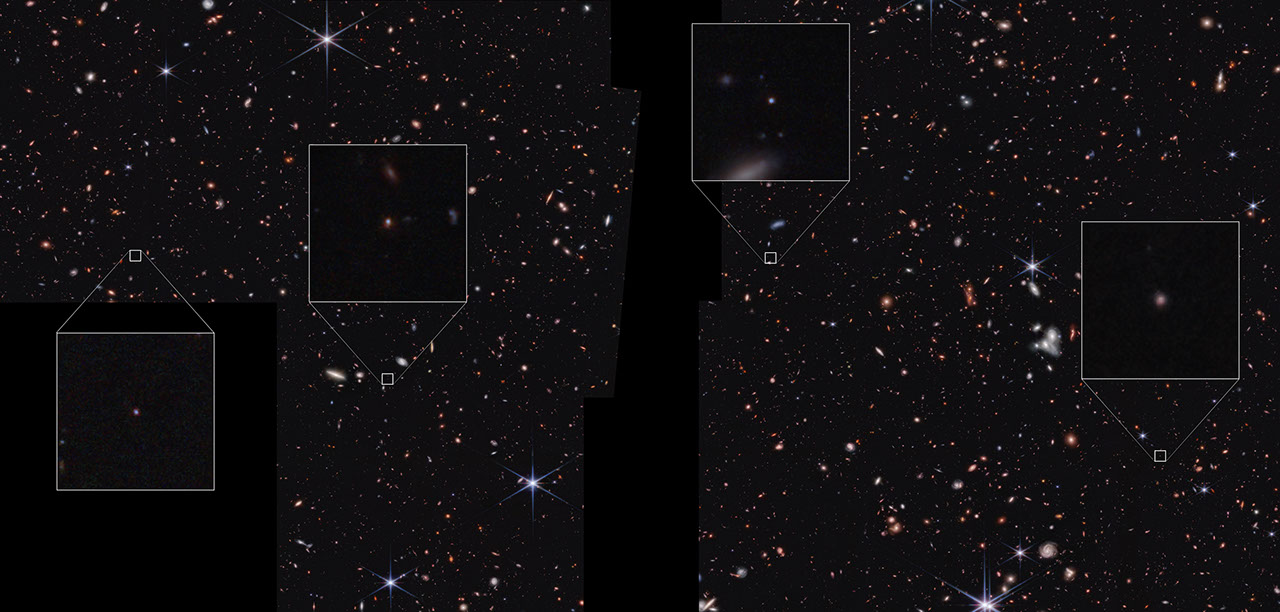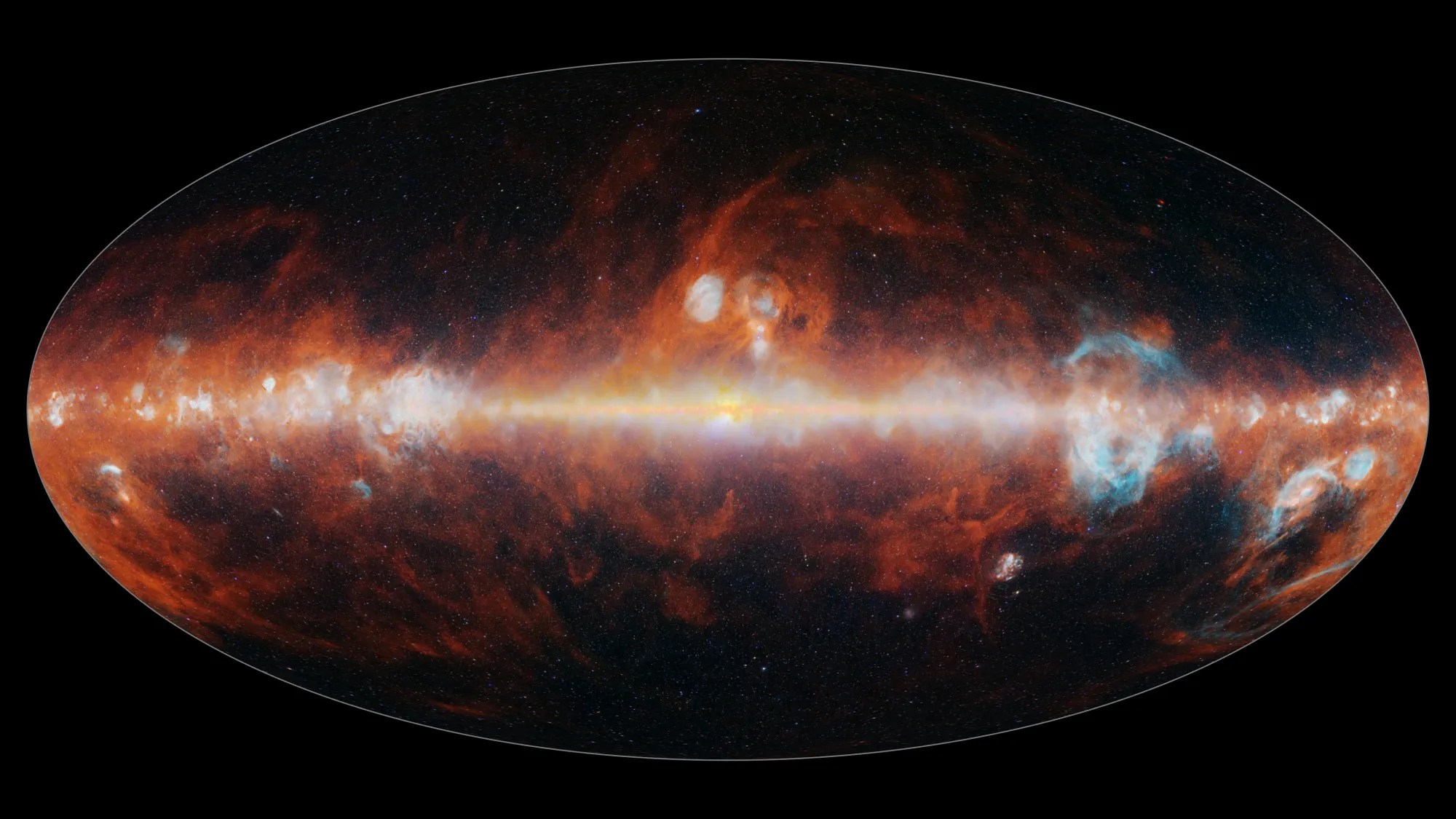Pioneer Venus 2
Type
Launch
Target
Objective
What was Pioneer Venus 2?
Pioneer Venus 2, the sistership to Pioneer Venus 1, consisted of the main spacecraft, a large probe, and three identical small probes—all designed to collect data as they descended toward the surface of Venus. Amazingly two probes survived the hard impact and one transmitted data from the surface for 67.5 minutes.
| Nation | United States of America (USA) |
| Objective(s) | Venus Impact |
| Spacecraft | Pioneer Venus Multiprobe |
| Spacecraft Mass | 1,993 pounds (904 kilograms) |
| Mission Design and Management | NASA / ARC |
| Launch Vehicle | Atlas Centaur (AC-51 / Atlas no. 5031D) |
| Launch Date and Time | Aug. 8, 1978 / 07:33 UT |
| Launch Site | Cape Canaveral, Fla. / Launch Complex 36A |
| Scientific Instruments | Main Spacecraft: 1. Neutral Mass Spectrometer (BNMS) 2. Ion Mass Spectrometer (BIMS) Large Probe: 1. Neutral Mass Spectrometer 2. Solar Flux Radiometer 3. Gas Chromatograph 4. Infrared Radiometer 5. Cloud Particle Size Spectrometer 6. Nephelometer Small Probes (each): 1. Neutral Mass Spectrometer 2. Gas Chromatograph 3. Solar Flux Radiometer 4. Infrared Radiometer 5. Cloud Particle Size Spectrometer 6. Temperature, Pressure, Acceleration Sensors 7. Nephelometer |
Key Dates
Aug. 8, 1978: Launch
Nov. 16, 1978: Large Probe released about 7 million miles (11.1 million kilometers) from Venus
Nov. 20, 1978: Small Probes (North, Day, and Night Probes) released about 6 million miles (9.3 million kilometers) from Venus
Dec. 9, 1978: All five spacecraft components reached Venusian atmosphere with Large Probe entering first
In Depth: Pioneer Venus 2
Pioneer Venus 2, the sistership to Pioneer Venus 1, consisted of the main spacecraft, a Large Probe (698 pounds or 316.5 kilograms), and three identical Small Probes, all of which were designed to collect data during entry into the atmosphere of Venus. The probes were shaped like cones and were not expected to survive impact with the surface.
Pioneer Venus 2 released the Large Probe (5 feet or 1.5 meters in diameter) on Nov. 16, 1978, while about 7 million miles (11.1 million kilometers) from the planet.
Four days later, the bus released the three Small Probes—the North Probe, Day Probe and the Night Probe—while about 6 million miles (9.3 million kilometers) from Venus.
All five components reached the Venusian atmosphere Dec. 9, 1978, with the Large Probe entering first.
Using a combination of air drag and a parachute, the Large Probe descended through the atmosphere, entering at a velocity of 7 miles per second (11.6 kilometers per second), slowing down until it impacted on the surface of Venus at 19:40 UT. It landed at 4.4 degrees north latitude and 304 degrees east longitude at a velocity of 20 miles per hour (32 kilometers per hour). Transmissions ceased at impact as expected.
The three Small Probes (2.5 feet or 76 centimeters in diameter) arrived in the atmosphere within minutes of the bigger one and descended rapidly without the benefit of parachutes.
They each opened their instrument doors at altitudes of about 43.5 miles (70 kilometers) and began to transmit information about the Venusian atmosphere immediately.
Each probe took about 53 to 56 minutes to reach the surface. Amazingly, two of the three Small Probes survived the hard impact. The so-called Day Probe transmitted data from the surface for 67 minutes, 37 seconds, before succumbing to the high temperatures, pressures and power depletion. Information from its nephelometer indicated that dust raised from its impact took several minutes to settle back to the ground.
All three Small Probes suffered instrument failures, but not significant enough to jeopardize their main missions. Their landing coordinates were: 60 degrees north latitude and 4 degrees east longitude (North Probe); 32 degrees south latitude and 318 degrees east longitude (Day Probe); and 27 degrees south latitude and 56 degrees east longitude (Night Probe).
The main spacecraft, meanwhile, burned up in the atmosphere at an altitude of about 75 miles (120 kilometers)—about 1.5 hours after the probes—and provided key data on higher regions.
Data from the probes indicated that between about 6 and 31 miles (10 and 50 kilometers) there is almost no convection in the atmosphere of Venus. Below a haze layer at about 19 miles (30 kilometers), the atmosphere is relatively clear.
In addition, below an altitude of 31 miles (50 kilometers), the temperatures reported from the four probes indicated very few differences even though their entry sites were separated by thousands of miles (kilometers).
Key Source
Siddiqi, Asif A. Beyond Earth: A Chronicle of Deep Space Exploration, 1958-2016. NASA History Program Office, 2018.





































